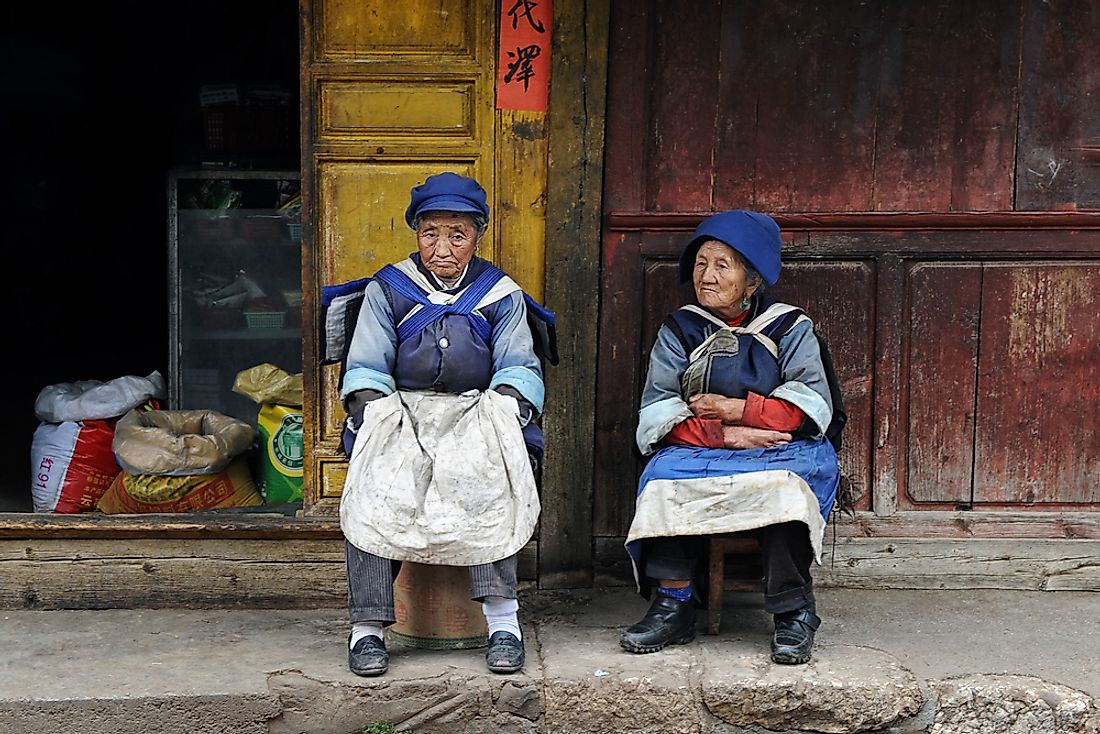Who are the Nakhi People?

Nakhi or the Nashi people are an ethnic group found at the foothill of the Himalayas in the Yunnan Province and the Sichuan Province in China. They are thought to have migrated from Southwest China and moved towards the Tibetan region. Nakhi is among ethnic groups given official recognition by the Government of China. The government of China considers the Mosuo as part of the Nakhi people, an issue that has been disputed by both ethnicities. The Nakhi people were brought to the attention of the western world by Joseph Rock, an American botanist, and Peter Goullart, a Russian writer. The two friends interacted with the Nashi people extensively with Peter describing their beliefs and tradition in his book, “Forgotten Kingdom.”
History Of The Nakhi People
The Nashi are believed to be descendants of Proto-Qiang, an ethnic group living in the Tibetan plateau. The Nashi people were known as Mosha-yi during the Sui and Tang dynasties. Frequently harassed by other tribes, the Proto-Nakhi moved to the banks of Nujiang River then to the Along River in the present-day Sichuan Province. They finally settled at Baisha and Lijiang areas in 3 CE. While at Baisha, they split into three groups; the Nakhi who remained at Baisha, the Bai in Dali, and the Mosuo who live around Lugu Lake. From the tenth to the thirteenth century, the Nakhi people living in Lijiang experienced a period of prosperity with agriculture, handicraft, and livestock production as the main economic drivers. During this period, the slave-owning people were transformed into a feudal caste of Lords.
Culture Of The Nakhi People
The culture of the Nakhi people is largely its own with little influence by the Confucian roots of the Han Chinese. Their music is several decades old and is still being kept alive by artists such as He Wen Guang who specializes in both traditional and modern-styled Nashi music. The music includes literary lyrics and musical styles derived from themes prevalent in Tang, Song, and Yuan.
Nashi architectural design is similar to that of the Han Chinese. The houses are built in one courtyard with one to four houses around it. The temples are decorated with carvings on poles and wall paintings exhibiting dongba and Buddhist influences. Cremation of the dead remains a preferred means of disposing of the dead although burial is also common. During the funeral ceremonies, religious scriptures are chanted to expiate the sins of the dead.
In Nakhi society, women are confined to most of the household and farm work and keep to the kitchen when guests are around. However, they are influential in family decisions. The dressing is an important part of the Nashi culture. The women wear loose gowns with wide sleeves accompanied by jackets and long pants. Sheepskin can be worn over the shoulder. In modern times, the traditional dresses are rare among the younger generation and are only worn during cultural events.
Nakhi Language
The Nakhi language, commonly referred to as Naxi language, is a Sino-Tibetan language spoken by over 300,000 people. The majority of the Naxi speakers also speak other languages including Chinese, Tibetan, Bai, and English as a second language. The common Naxi dialects include Lijiang, Lapao, and Lutien. Lijiang is considered the most uniform of the three dialects and has been heavily influenced by the standard Chinese dialect.











